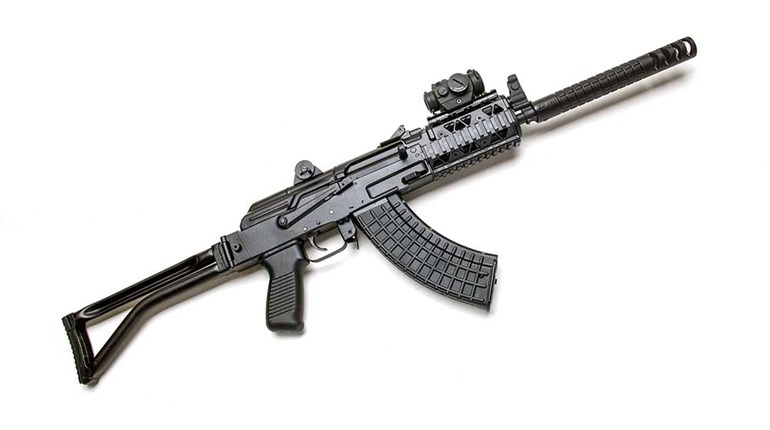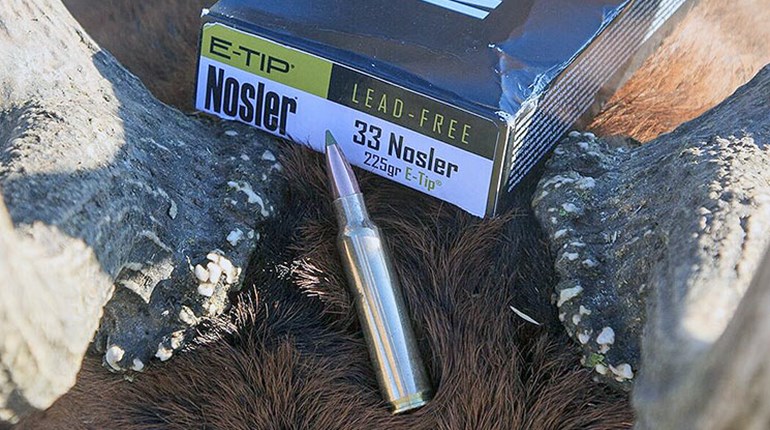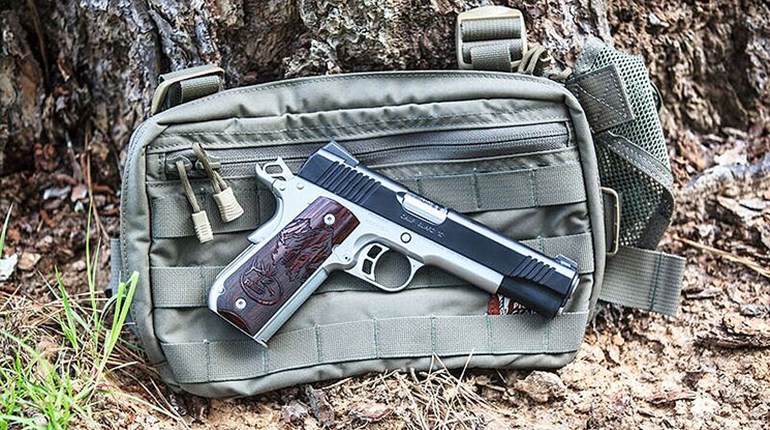The Herter’s name is not new to American hunters. George Herter’s Waseca, Minn., based catalog landed in sportsmen’s mailboxes for decades. The massive Herter’s book was filled with goods for hunting, fishing and shooting. Basically, Herter’s was the Cabela’s of its era, so it’s appropriate then that Cabela’s own line of ammunition carries the Herter’s name. Launched out of necessity, Herter’s Select Grade ammunition provides quality rifle, handgun and shotgun cartridges to the U.S. market.
It’s no secret that ammunition manufacturers have experienced unprecedented demand over the past few years; these shortages have not only plagued consumers but also retailers. Cabela’s simply couldn’t get enough ammo in stock to feed the needs of its customers so it sought out alternate supplies. After meeting with manufacturers worldwide, Cabela’s chose operations in the Czech Republic, Italy and Russia to load rifle, handgun and shotgun ammunition to its specifications. And the Herter’s Select Grade line was born.
For hunters and shooters looking for traditional ammunition, Herter’s Select Grade Brass Case loads offer full metal jacket and jacketed cup-and-core soft-point bullets for target and big-game use. These Boxer-primed, non-corrosive cartridges are loaded by the Czech firm Sellier & Bellot in several common rifle and handgun chamberings. Back when it didn’t pay to handload .223 or 9mm, S&B was my standard practice ammo in those chamberings. I’ve fired thousands of rounds of S&B ammo over the years and have found it to be of excellent quality; these loads are no exception.
Via years of handloading, I’ve found that the most important factors in creating accurate factory ammunition are consistent velocities and dimensional concentricity. The three methods that I used to measure these qualities are the chronograph, a Hornady concentricity gauge and, of course, range testing. The concentricity gauge measures bullet “run-out,” a term for how much the bullet wobbles when turned 360 degrees. The less run-out, the straighter the bullet is in the case and, generally, the more accurate the cartridge. A random sampling of five Select Grade Brass Case cartridges was measured with an average run-out of .0024 inch, which is outstanding for factory ammunition.
I tested Herter’s .270 Win. 130-grain soft-point loads in my ultra-lightweight, 22-inch-barreled Rem. 700 Titanium, which is very accurate despite its pencil-thin barrel and low overall mass. The extreme velocity spread was 35 fps for five shots and the standard deviation was 13, which is actually more consistent than a premium U.S.-made ammunition fired from the same rifle minutes earlier. Accuracy was good with three-shot groups averaging just over an inch at 100 yards. Velocities were on the mild side with an average of 2837 fps. This is quality ammo available at a reasonable price; I would feel perfectly comfortable using this ammunition for whitetails and similar game, though for tougher animals like elk, I prefer the performance of a premium bullet.
Full-metal-jacket ammunition for practice and plinking has become all but impossible to obtain recently due to the unbelievable demand. Herter’s International Select Grade is designed to help affordably meet that demand. Made in Russia on the same production lines as Tula/Wolf ammo, the International line uses steel cases and non-corrosive Berdan primers.
Available in a variety of cartridges, I tested the International line’s 150-grain FMJ .308 Win. in a very accurate Remington 700 Police Sharpshooter and the new Merkel RX Helix. Accuracy was excellent, with both three- and five-shot groups measuring at or under an inch at 100 yards. Average bullet run-out was .0048 inch, which is perfectly acceptable for hunting ammo, much less practice loads. The .308 loads functioned 100 percent in the Remington though I experienced several failures to fire with the Merkel, something I’ve experienced previously when shooting military-type ammunition in European sporting rifles. The rifle was making what appeared to be sufficient firing pin strikes on the primer, though the strike impressions were of a narrow diameter. My advice is to try some in your rifle before buying in bulk.
Shotshells
Herter’s became a household name in waterfowl products, and shotgunners haven’t been left out of the mix when it comes to loading Herter’s Select ammunition. It offers a full line of 12-, 16- and 20-gauge shotshells suited for sport, hunting and defense with products ranging from rifled slugs to No. 8 dove loads. One of the more unique loads is the 12-gauge Multidefense round that combines a .65-inch lead ball with six No. 1 buckshot pellets. All of the shotgun offerings are manufactured in Italy to Cabela’s specifications. Quality control is excellent and the performance is on par with pricier shells.
I tested Herter’s Select Field Extreme Range 65, featuring a 1¼-ounce payload of No. 2's that are great for long shots on game such as turkeys or predators. Leaving the muzzle at 1275 fps, the inverted shot capsule actually holds the charge together until roughly 60 yards when the 132 pellets are released into a pattern. I wish I’d had one of these shells in my vest this spring when a stubborn old Osceola gobbled away 60 yards from me across a bare patch of burned ground. There was no getting any closer, my calls weren’t sultry enough to draw him in and the turkey lived to breed another day.
Like Cabela’s, Herter’s is an iconic brand name to American sportsmen. We can be thankful it lives on in this line of accurate, affordable and diverse products that might help put a dent in the shortages keeping many of us away from the range. With loads for everything from plinking to big game, home defense to doves, Herter’s Select line of ammo has something for every hunter and shooter.
Select Brass Case
Calibers: various (.270 Win. tested)
Velocity: 860 fps (22" barrel)
Bullet Style: soft point, flat base
Features: brass case, Boxer-primed
MSRP: 16 per box of 20
International Select Grade
Calibers: various (.308 Win. tested)
Velocity: 711 fps (22" barrel)
Bullet Style: full metal jacket
Features: steel case, Berdan-primed
MSRP: 11 per box of 20
Select Field Extreme Range 65
Gauges: 2, 16, 20 (12-gauge 2 3/4" tested)
Velocity: 275 fps
Shot Size: o. 2 tested
Features: “extreme range” shot capsule
MSRP: 21 per box of 10





































